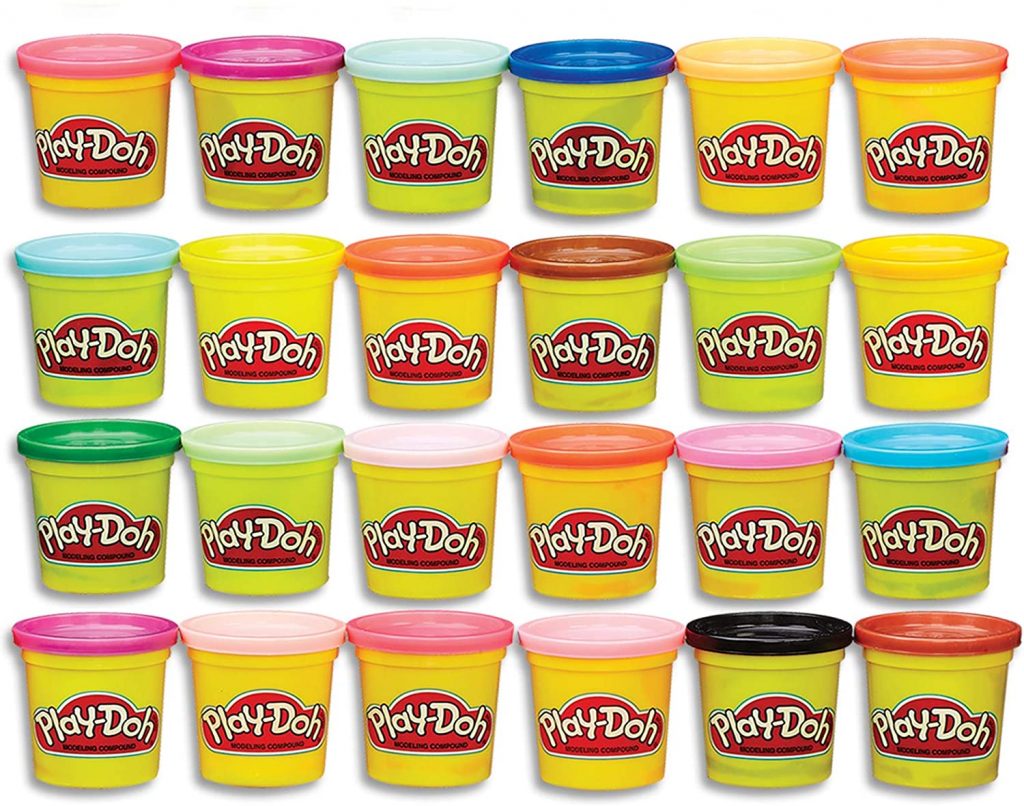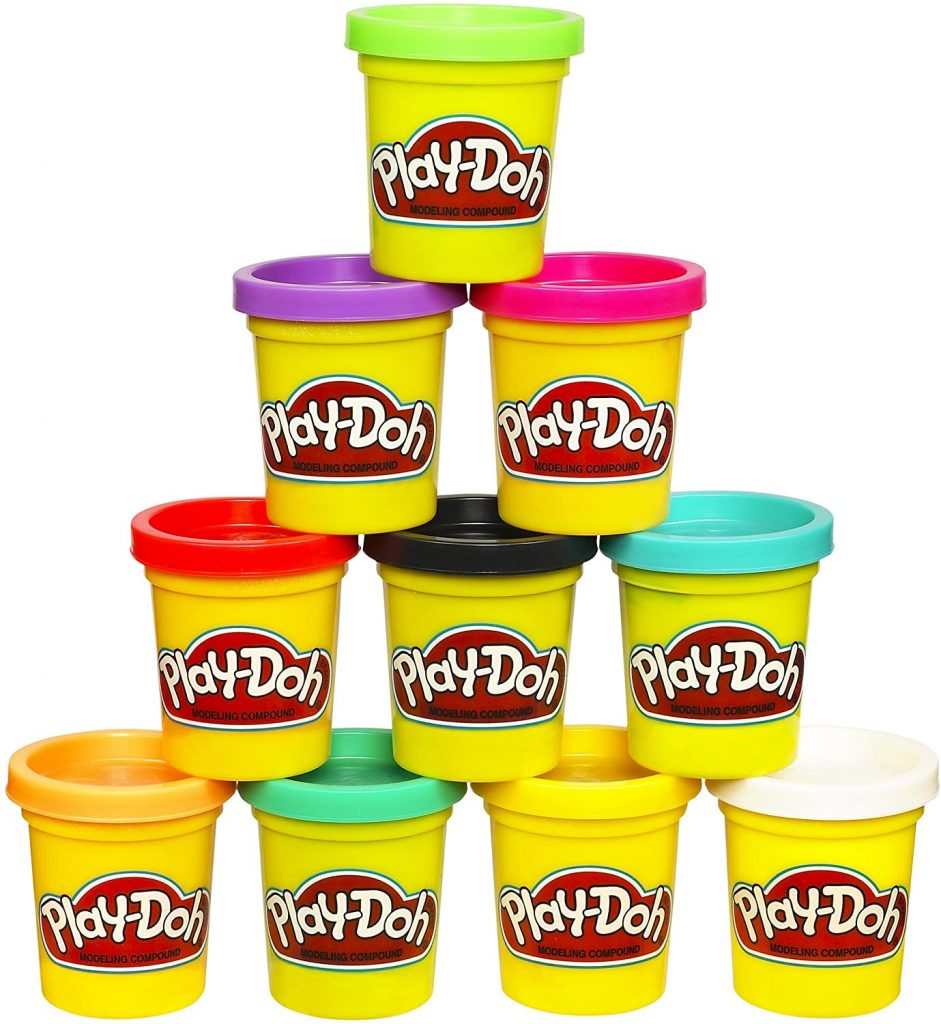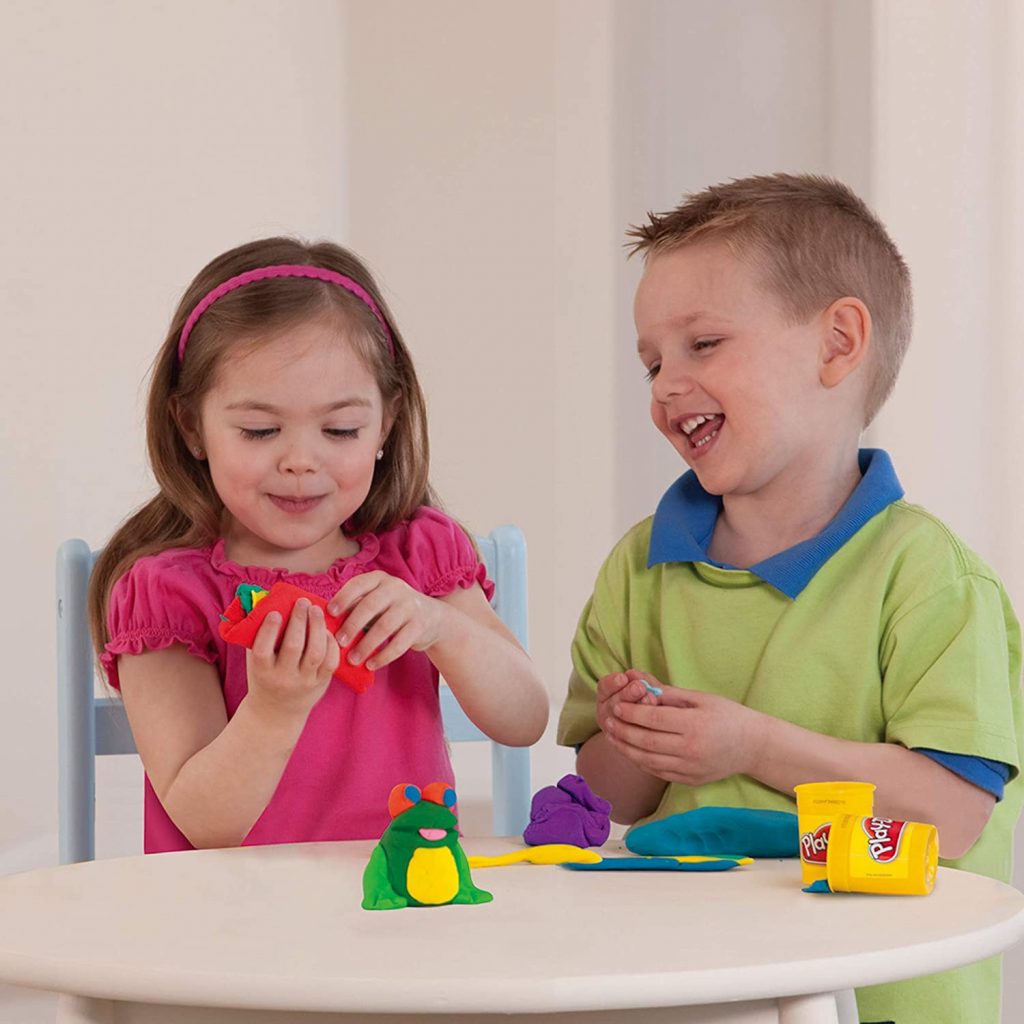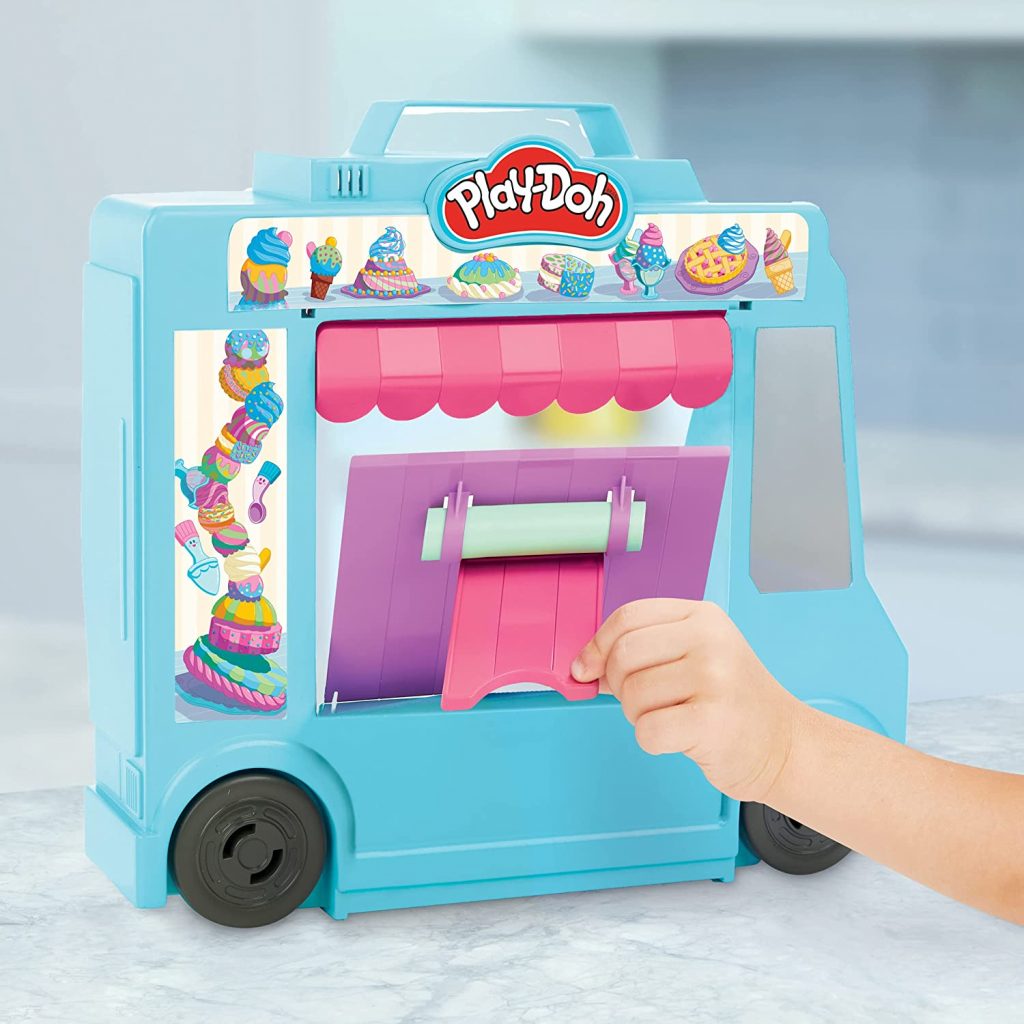How Was Play-Doh Made?
How was Play-Doh made? It all started in the 1930s as a wallpaper cleaner and then became a children's activity after a schoolteacher's suggestion.
This article is more than 2 years old

Play-Doh is undoubtedly one of the most recognizable “toys” of this century. Every kid who plays with it is instantly mesmerized by its color, texture, and malleability and every parent cringes at the thought of it getting smeared into the fibers of their living room carpet, making for an ideal recipe for cultural staying power. But how was Play-Doh made and who do we have to thank for hours of kids’ activities (even with the mess)?
Since its debut in the mid-1950s, Play-Doh has gone through periods of growth, evolution, and innovation, all while maintaining the integrity of what made it so popular to begin with. So how did these addictive globs of colorful clay first come to be? The unlikely origins of this stuff and how Play-Doh was made just might surprise you.
HOW WAS PLAY-DOH MADE? IT FIRST STARTED AS A CLEANER IN THE 1930s

How was Play-Doh made? Well, before it became the Play-Doh we know and “love,” it was actually a product meant to clean wallpaper. Play-doh’s creator, Noah McVicker, developed the product while working in Cincinnati, Ohio for the soap company Kutol Products in the 1930s.
He came up with the idea after one of Kutol’s clients, Kroger Grocery, asked for a product that could remove coal stains from wallpaper. The product saw a great deal of success initially because prior to World War II, many people burned coal as a way of heating their homes.
This would oftentimes leave walls caked in soot, making the demand for a soot cleaner quite high. However, following WWII, many homes transitioned to using natural gas as a heating source, thus eliminating the need for McVicker’s wallpaper-cleaning product.
PLAY-DOH BEING USED AS A KID’S ACTIVITY WAS INSPIRED BY A SCHOOL TEACHER
Kutol Products was on the verge of filing for bankruptcy when McVicker’s nephew, Joe McVicker, decided to join the business with the goal of bringing them back from the brink. And that he did, in the unlikeliest of ways.
How Play-Doh was made into a kids’ toy began during a conversation Joe had with his sister-in-law, Kay Zufall. She was a schoolteacher and brought up that she had been doing arts and crafts projects with Kutol’s wallpaper cleaning product. Her students were thoroughly enjoying it. Joe’s conversation with Zufall is what ultimately prompted both Joe and Noah to rebrand the product as children’s modeling clay.
In 1956, the uncle and nephew duo formed the Rainbow Crafts Company, forever changing how Play-Doh was made for the masses. They began marketing their product as a kid’s activity. Woodward & Lothrop, a Washington D.C.-based department store, was the first to begin selling the product in 1956. By 1957, Play-Doh was being sold at Macy’s 34th Street location in New York City and in Chicago’s Marshall Field’s department store. Rainbow Crafts obtained the official trademark for Play-Doh in 1965.
Play-Doh saw growth throughout the 1960s and wound up being sold in various European markets including Britain, France, and Italy. Rainbow Crafts merged with Kenner in 1971, to later be bought out by the Tonka Corporation in 1987. In 1991, Hasbro acquired the rights to Play-Doh, which they still hold today.
HOW PLAY-DOH IS MADE ISN’T KNOWN, AS THE EXACT INGREDIENTS ARE A SECRET

According to How Stuff Works, Play-Doh’s most current patent details that the non-toxic compound is comprised of water, a starch-based binder, a retrogradation inhibitor, salt, a lubricant, a surfactant, a preservative, a hardener, a humectant, fragrance, and color.
There is a lot of ambiguity when it comes to the ingredients on this list, which is likely to protect Hasbro’s IP and prevent any Play-Doh imposters from stealing the top-secret formula.
However, despite the ingredient list’s lack of specificity, it has not stopped many an individual from trying to concoct their own homemade version just for the sheer fun of it. A popular learning website, Kids Turn Central, came up with a couple of different Play-Doh-like variations of their own, including one that uses peanut butter as a base. If kids didn’t already want to eat Play-Doh enough as it is, they are sure to take a couple of nibbles out of that homemade concoction.
PLAY-DOH IS IN THE TOY HALL OF FAME

Since its inception, Play-Doh has been marketed with various playsets. Some of the most notable include the 1960s Fun Factory which allowed kids to push the Play-Doh through various shapes and mechanisms. Many variations of the Fun Factory have continued to be released over its six-decade-long history.
In 1986, there was a figurine released that kids could give “Play-Doh hair” and then style it to their liking. In 1995, Play-Doh saw its own computer game come to life and in 2003, a popular Play-Doh activity table started being sold.
In 1998, Play-Doh was officially inducted into Rochester, New York’s National Toy Hall of Fame, and in 2003, it came to be a part of the Toy Industry Association’s coveted Century Toy List.
Today, Play-Doh is manufactured and sold in 75 countries worldwide, selling upwards of 95 million of its tiny tubs a year and offering dozens of unique and interesting playsets from ice cream trucks to kitchen sets and even licensed character molds like My Little Pony.
Play-Doh’s cultural staying power is truly a testament to how the simplest of things can evoke the most profound feelings of joy, excitement, and childhood wonderment. Play-Doh was originally meant to be something much different, and how Play-Doh was made into a classic kids’ toy is truly a fascinating story.





